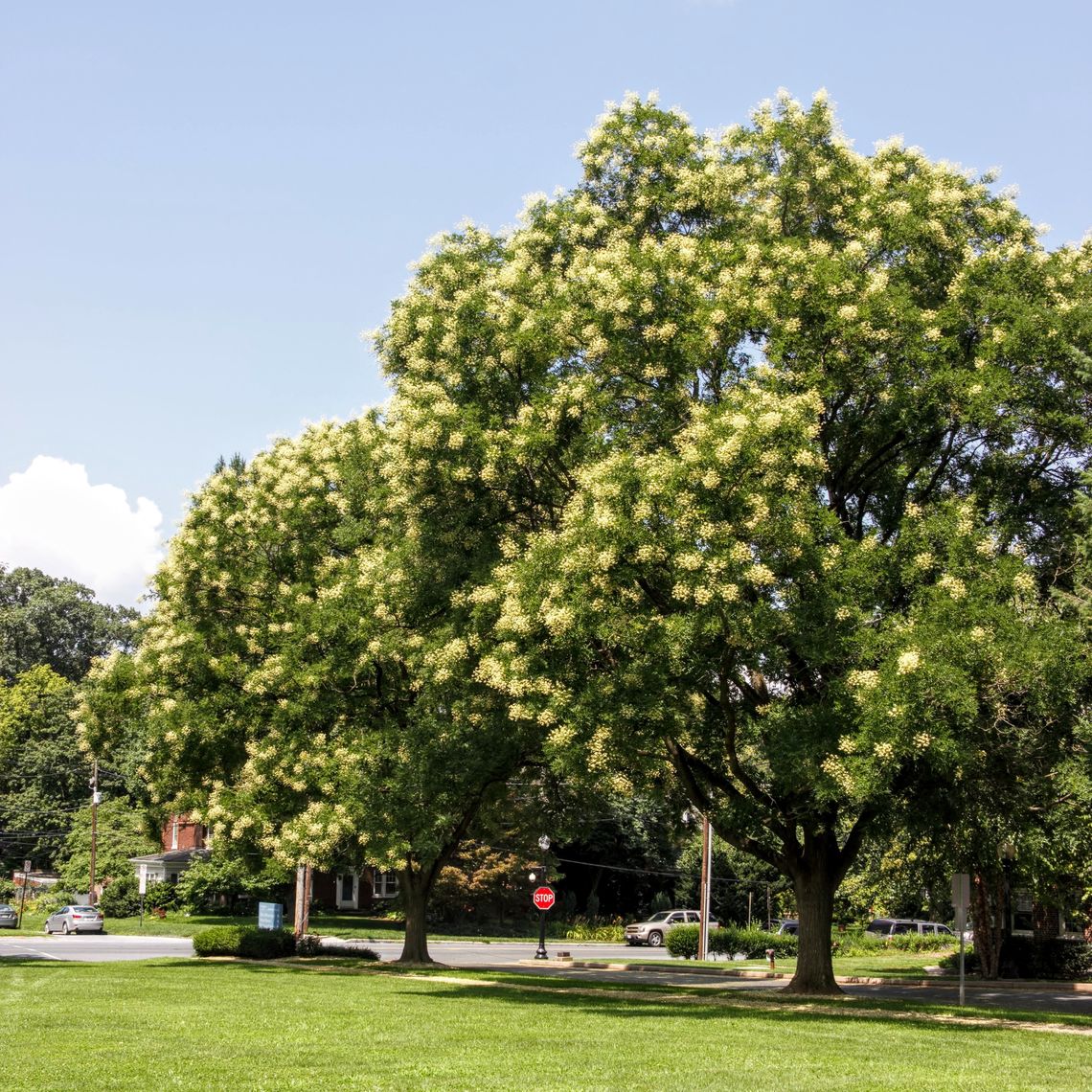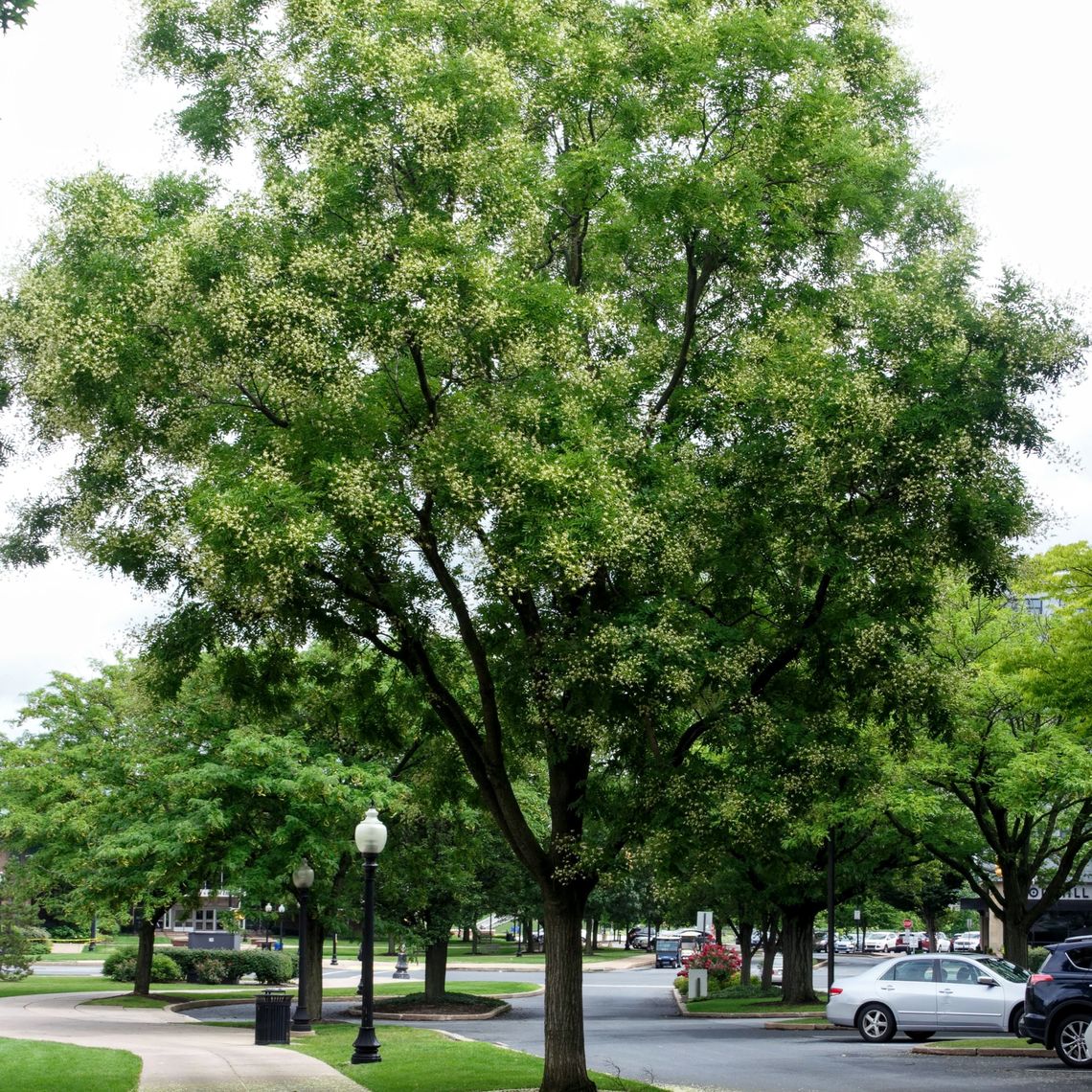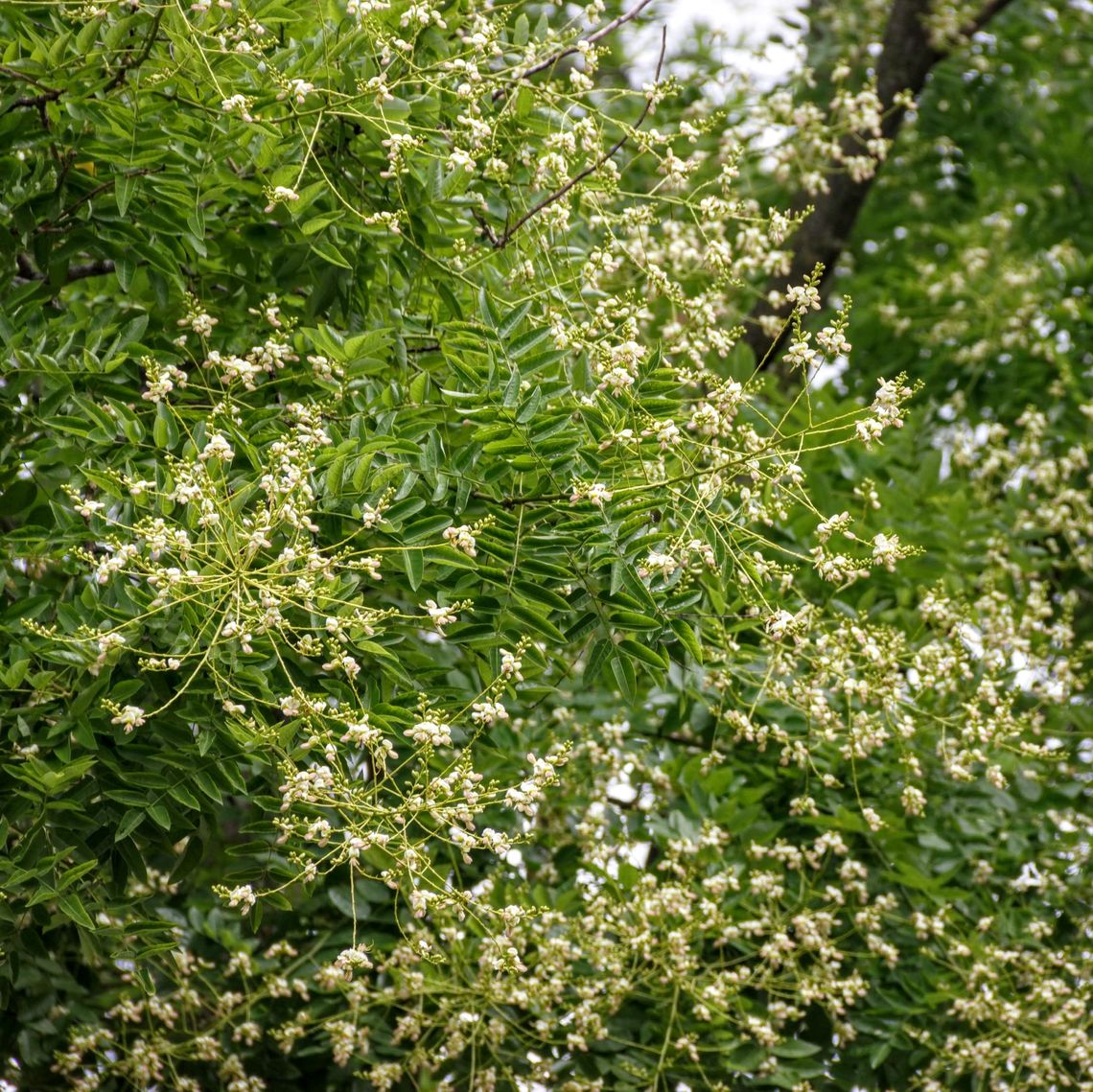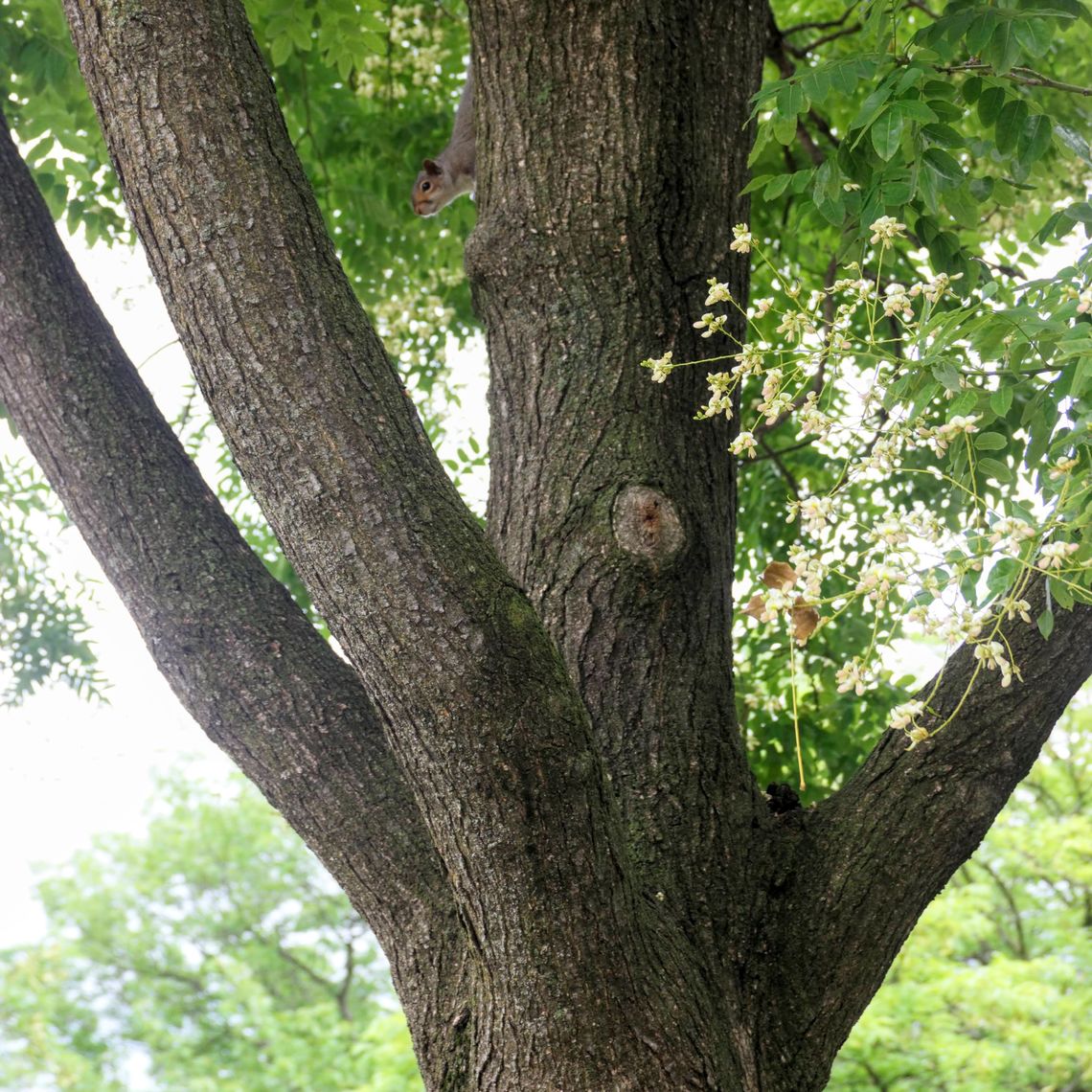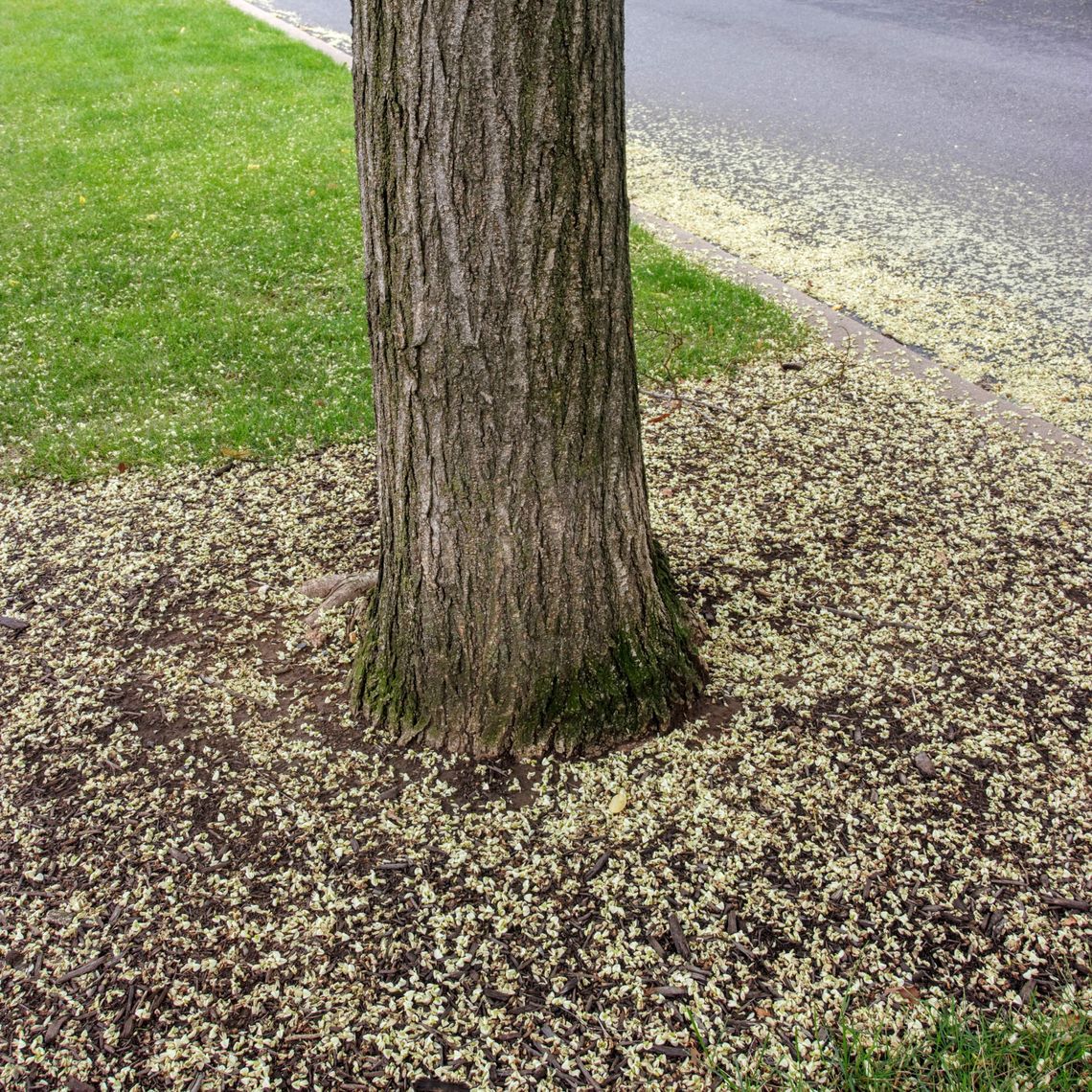Japanese Pagoda Tree (Sophora japonica)
The Japanese pagoda tree has large clusters of small, white flowers that cover the tree in the late summer. When the flower petals fall to the ground, it may appear as though the tree is skirted with a white blanket. The outer layer of flower pods are wrapped tightly around each fruit, making each pod resemble a string of beads. Despite its common name, this tree is actually native to China and Korea. The common name instead refers to the early use of this tree around Japanese Buddhist temples. This tree attracts insect pollinators.
Family: Fabaceae (Pea)
Characteristics: The 6-inch to 10-inch-long leaves are made up of 9-13 oval-shaped leaflets that are medium green. In the fall, leaves may turn yellow-green. In late summer, small, creamy white, pea-like flowers begin to bloom in large clusters. These flowers give way to pods that are constricted between the inside fruits, giving them a beaded appearance. Bark is light gray and has interlacing ridges. This tree has a broad and rounded shape. It grows 50-75 feet high and wide.
Foliage: Deciduous (leaves lost seasonally)
Geographic Origin: China, Korea (non-native)
Cultivation Notes: Requires low maintenance. Does best in full sun, though can tolerate part shade. Prefers medium-moist and well-drained soils. This tree is tolerant to air pollution and drought conditions.
Number on Campus: 11
Sources: Dirr, Morton Arboretum, Missouri Botanical Garden

